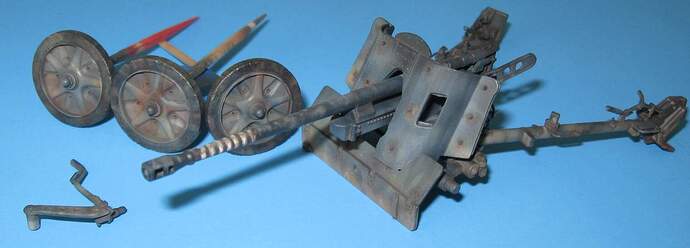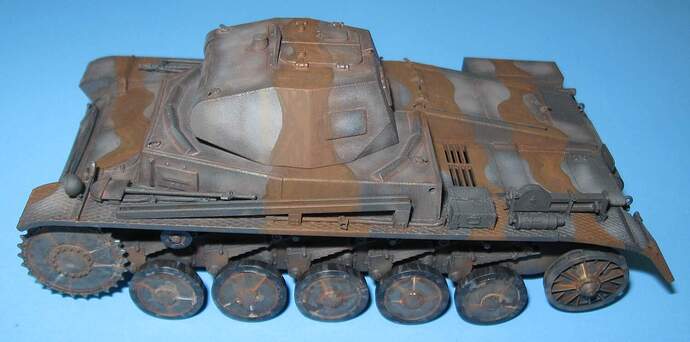Hey, hey.
About a year ago, for health reasons, I made the decision to transition from enamel to acrylic paints. In the past, I avoided acrylic paints because they scrape off very easily. However, with so many people getting such good results, I figured I would make a serious effort to figure it out.
After doing a lot of reading, I purchased about 50 Vallejo paints, divided between the Game Color, Model Air, and Model Color lines. If I recall correctly, each line uses a slightly different formulation and they do not always play well together, but I can figure that out as well.
I do a lot of sculpting with Milliput and decided to try out the new Vallejo paints on a pair of small custom creatures. After priming the sculptures with Model Master Light Ghost Gray Enamel, I hand painted a few Vallejo colors and one wash. The results were pretty horrible. The Model Color paints did not cover or level as advertised and the wash looks extremely poor when compared to oil paints. Obviously, I have much to learn.
After that experiment I had to put the figures and models away for about a year but now I am back at it. Testing new paints on custom sculptures was a terrible idea so this time around, I made up some cheap little models for practice–a Bogward, Flakvierling, and PaK 38.
The Light Ghost Gray Enamel worked very well as a primer so I will use that again. It bites well and seems to form a very strong basis for the Vallejo Acrylics. My useful knowledge with these paints pretty much ends there and so here come a whole bunch of questions in hope of reducing the learning curve. 
When spraying Model Air paints, should I thin or retard them? If so, how much thinner and/or retarder should I use? I am in a dry climate–Northern California–and have Vallejo Airbrush Thinner and Vallejo Flow Improver on hand. Do Model Air paints work consistently or will I need to adjust ratios for each color?
When spraying Model Color paints, should I thin or retard them? If so, how much thinner and/or retarder should I use?
When spraying Game Color paints, should I thin or retard them? If so, how much thinner and/or retarder should I use?
Can I safely spray Game Color, Model Air, and Model Color paints over and around one another?
What is the best product for cleaning an airbrush after using these paints? I really want to get away from using Lacquer Thinner for that purpose.
Using acrylics on acrylics, how long should I wait before brush painting over a sprayed coat to avoid lifting?
Can I use an oil wash directly over these acrylics? I have a lot of MiG oil paints and thin them with Mona Lisa odorless spirits.
Can I use Testor’s Acrylic Flat/Semi-Gloss/Gloss over Vallejo Paints or should I switch to the Vallejo equivalents?
I am sure I am missing something important but answers to those questions would make a super helpful start. Thank you for reading and any advice you may offer!
Doug

